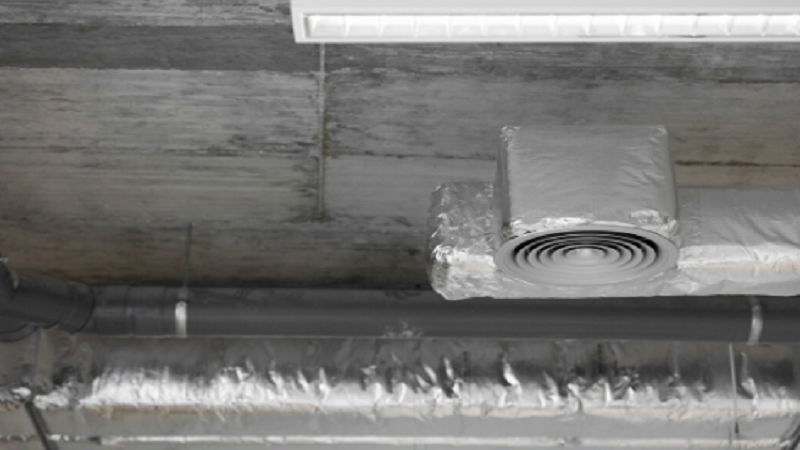You just wrapped up a home remodel. The paint is dry, the fixtures are in place, and your space looks like it belongs in a magazine. Everything’s clean, or at least, it seems that way. But then a week goes by. Then a month. You start noticing more dust than usual. Maybe your allergies are acting up, or there’s a musty smell hanging around. You keep cleaning surfaces, but the dust keeps coming back.
What gives?
It might not be on your countertops or furniture anymore. That remodeling dust has likely settled into a place most people don’t think about until something goes wrong: your air ducts.
Let’s talk about why post-remodel dust has a sneaky habit of disappearing into your HVAC system, and what that means for your air, your health, and your home long after the contractors have packed up.
Renovations Stir Up More Than You Expect
Whether you’re knocking down walls, installing new flooring, or even just sanding and painting, remodeling kicks a lot into the air. Sawdust, drywall particles, insulation fibers, and debris from old materials don’t just fall to the floor. These ultra-fine particles float, and they float for a while.
Here’s the tricky part: if your HVAC system was running at any point during your remodel (which it usually is, especially for temperature control), that dust didn’t just stay in the room where the work was happening. It got pulled into the return vents and circulated throughout the home.
That means your “clean” rooms probably aren’t so clean. And your ducts? They’re acting like long, hidden storage bins full of everything your remodel stirred up.
Why Dust Settles in Ducts (And Stays There)
Think of your ductwork like a highway system for air. When your HVAC is on, it’s constantly pushing and pulling air through those ducts to keep your home comfortable. But air isn’t the only thing moving. Tiny particles, especially the kind generated during construction, are floating along for the ride.
Here’s why those particles tend to settle in the ductwork:
- Low air velocity in some areas: Not every inch of ductwork gets strong airflow. Dust often settles in corners, joints, or long runs where the air slows down.
- Textured or dirty surfaces: If your ducts haven’t been cleaned in years (which is pretty common), the existing layer of grime makes a perfect surface for new dust to cling to.
- Poor filtration: During remodeling, it’s common to remove or bypass filters temporarily. Even if filters are in place, they may not catch the finest particles like drywall dust.
And once it’s in there, it stays put. Until, of course, the system kicks on and redistributes those particles into the air you breathe.
Not All Dust Is the Same
You might think, “It’s just dust, no big deal.” But post-remodel dust is a different beast. It’s not the usual mix of skin cells, pet dander, and outdoor dirt. Renovation dust can contain:
- Silica from tile and concrete
- Fiberglass particles from insulation
- VOCs (volatile organic compounds) from new paint and adhesives
- Wood particles, some treated with chemicals
- Heavy metals from old paint or building materials
These aren’t just cosmetic concerns, they’re air quality issues.
Your body reacts differently to construction dust. For example, silica dust from concrete or grout is known to irritate lungs and is considered hazardous when inhaled over time. Even small exposure to certain chemicals can trigger headaches, nausea, or respiratory discomfort, especially for children, seniors, or people with asthma or allergies.
Why Symptoms Don’t Show Up Right Away
One of the most confusing things about this hidden dust problem is the timing. People often feel fine for a few days or even weeks after a remodel. Then symptoms start creeping in, sneezing, sore throats, fatigue, or headaches. It’s easy to chalk it up to weather or allergies.
But in many cases, the cause is sitting right above your ceiling or behind your walls, gradually leaking into your breathing space every time your system turns on.
It’s like the dust is on a slow drip, too light to notice all at once, but enough to make an impact over time.
“I Just Cleaned the Whole House, Why Does It Still Feel Dusty?”
Here’s something many homeowners experience post-renovation: you clean everything top to bottom. You wipe surfaces, vacuum, mop, maybe even shampoo the carpets. But the space still feels off. Maybe the sunlight through the window still reveals floating particles in the air. Or maybe you wipe down a shelf one day and it’s dusty again the next.
That’s a sign your cleaning is working, but only on the visible areas. If the source of the problem is inside the ducts, you’re basically cleaning around the edges while the dust continues to cycle out of sight.
Until you deal with the ductwork, you’re only treating the symptoms, not the cause.
When Your HVAC System Turns Into a Dust Distributor
Imagine this: you finish your renovation, and a few days later you switch on the AC or heat. What you don’t realize is that you’re also activating a built-in dust disperser. Each time your HVAC kicks on, a puff of construction residue may be pushed out through your vents, tiny particles that settle on furniture, float in the air, or make their way into your lungs.
Here are some subtle signs your HVAC system might be recycling post-remodel dust:
- A musty or chalky smell when the air turns on
- Dust build-up around supply vents, even after cleaning
- Frequent HVAC filter clogs, even with high-quality filters
- Noticeable layer of dust in rooms that weren’t part of the remodel
- Increased allergy or asthma symptoms in the household
How Dust in Ducts Affects Air Quality and HVAC Performance
Beyond the obvious air quality concerns, dusty ducts can actually mess with the performance of your HVAC system. Here’s how:
- Reduced airflow: Excess dust and debris can clog ducts and filters, making it harder for air to move through. That means your system has to work harder, and uses more energy.
- Uneven temperatures: Dust build-up can impact how evenly air is distributed, creating hot or cold spots in your home.
- Shorter equipment lifespan: If your system is constantly clogged or under strain, it’s more likely to break down or wear out sooner than expected.
- Bad smells: Construction dust sometimes carries odors that linger in your vents, especially if moisture gets involved.
And while the long-term performance problems can be frustrating, the short-term issue is still the air you and your family are breathing every day.
So, What Should You Do?
This isn’t a scare tactic, it’s just a heads-up. If you’ve gone through a renovation recently and haven’t had your ducts checked or cleaned, it might be time to do so.
Many homeowners assume that the cleaning they do on surfaces is enough, but ducts are out of sight and often get forgotten. Think of it like cleaning the inside of a water pipe. Just because the faucet looks clean doesn’t mean the water is flowing through a clean path.
A proper post-renovation duct cleaning can help reset your home’s air quality, reduce allergens, and make your HVAC system run smoothly. Even better, it can give you peace of mind that your “new” space isn’t secretly harbouring the dust of your old one.

